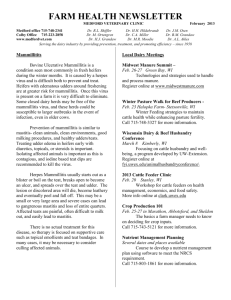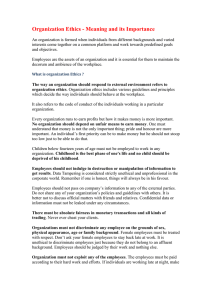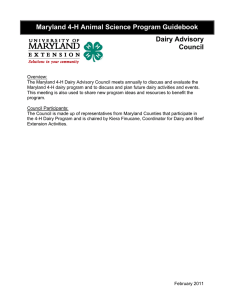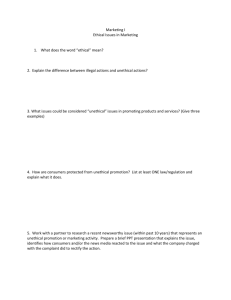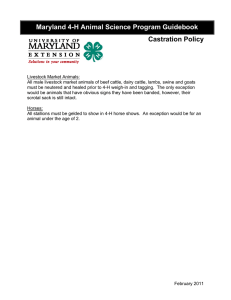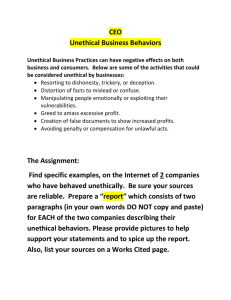15 Year - Ethics
advertisement
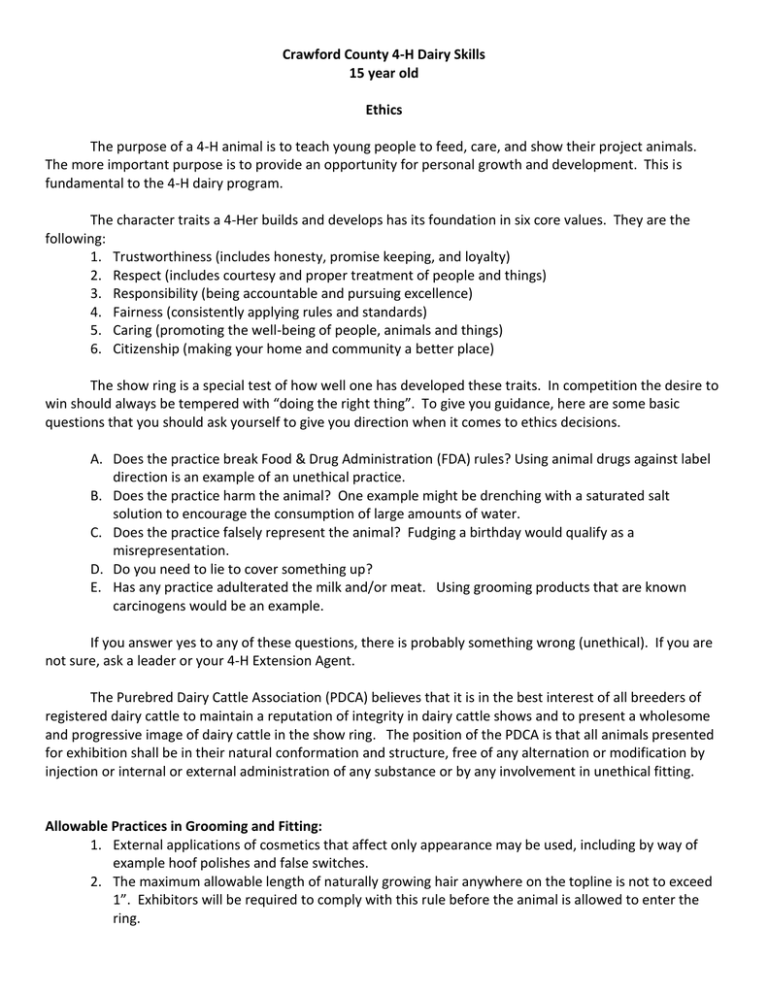
Crawford County 4-H Dairy Skills 15 year old Ethics The purpose of a 4-H animal is to teach young people to feed, care, and show their project animals. The more important purpose is to provide an opportunity for personal growth and development. This is fundamental to the 4-H dairy program. The character traits a 4-Her builds and develops has its foundation in six core values. They are the following: 1. Trustworthiness (includes honesty, promise keeping, and loyalty) 2. Respect (includes courtesy and proper treatment of people and things) 3. Responsibility (being accountable and pursuing excellence) 4. Fairness (consistently applying rules and standards) 5. Caring (promoting the well-being of people, animals and things) 6. Citizenship (making your home and community a better place) The show ring is a special test of how well one has developed these traits. In competition the desire to win should always be tempered with “doing the right thing”. To give you guidance, here are some basic questions that you should ask yourself to give you direction when it comes to ethics decisions. A. Does the practice break Food & Drug Administration (FDA) rules? Using animal drugs against label direction is an example of an unethical practice. B. Does the practice harm the animal? One example might be drenching with a saturated salt solution to encourage the consumption of large amounts of water. C. Does the practice falsely represent the animal? Fudging a birthday would qualify as a misrepresentation. D. Do you need to lie to cover something up? E. Has any practice adulterated the milk and/or meat. Using grooming products that are known carcinogens would be an example. If you answer yes to any of these questions, there is probably something wrong (unethical). If you are not sure, ask a leader or your 4-H Extension Agent. The Purebred Dairy Cattle Association (PDCA) believes that it is in the best interest of all breeders of registered dairy cattle to maintain a reputation of integrity in dairy cattle shows and to present a wholesome and progressive image of dairy cattle in the show ring. The position of the PDCA is that all animals presented for exhibition shall be in their natural conformation and structure, free of any alternation or modification by injection or internal or external administration of any substance or by any involvement in unethical fitting. Allowable Practices in Grooming and Fitting: 1. External applications of cosmetics that affect only appearance may be used, including by way of example hoof polishes and false switches. 2. The maximum allowable length of naturally growing hair anywhere on the topline is not to exceed 1”. Exhibitors will be required to comply with this rule before the animal is allowed to enter the ring. 3. Addition of foreign objects, including but not limited to hair or hair substitutes, cloth or fiber, to change the natural contour or appearance of the animal’s body is prohibited. 4. Externally sealing the teat end with a preparation that does not harm the animal’s skin is permissible. Natural teat placement will be given preference over artificially positioned teats. Violations: False, Deceptive or Unacceptable Practices 1. Misrepresenting the age and/or milking status of the animal for the class in which it is shown. 2. Treating the animal, particularly the udder, internally or externally: a. With an irritant or counter-irritant, b. Using a device to artificially create or enhance the udder crease, c. Using other substances as detected by testing that causes changes in the udder to artificially improve the conformation. d. Plugging the teat canal with foreign substances 3. Surgical or unethical insertion of any matter under the skin or into body cavities, performed to change the natural contour or appearance of the animal’s body (e.g., administration of fluid via a stomach tube or other similar apparatus to fill the rumen), though not to preclude practices required or involved in normal management. 4. Criticizing or interfering with the judge, show management or other exhibitors while in the show ring or other conduct detrimental to the breed or the show. 5. Challenging, threatening or interfering with an ethics committee appointed by show management to monitor the animals on exhibit on the show grounds. Questions: 1. If you covered ringworm with black shoe polish, would that be considered an unethical practice? True False 2. If your project animal was receiving treatment for an animal health condition under the advice of a licensed veterinarian and you were observing all label directions and restriction, how might this be considered in terms of ethics? Ethical Unethical 3. Name two Character traits 4-Her’s should strive to build and develop. ________________________________ ______________________________
